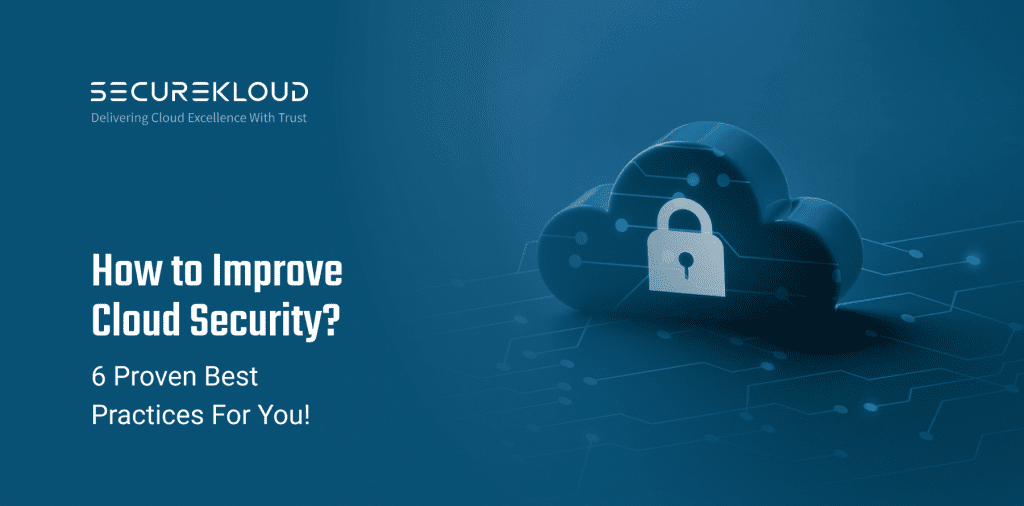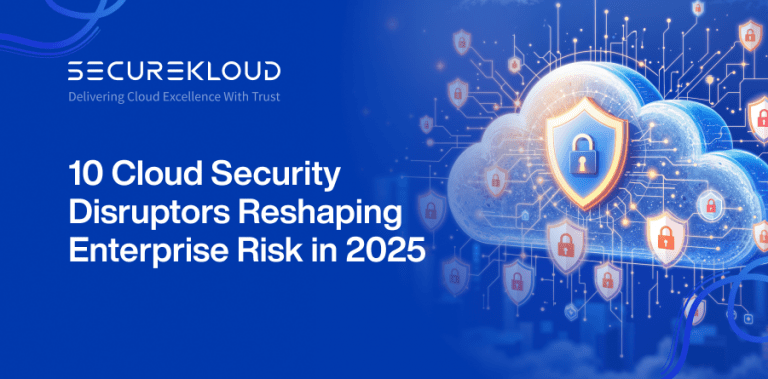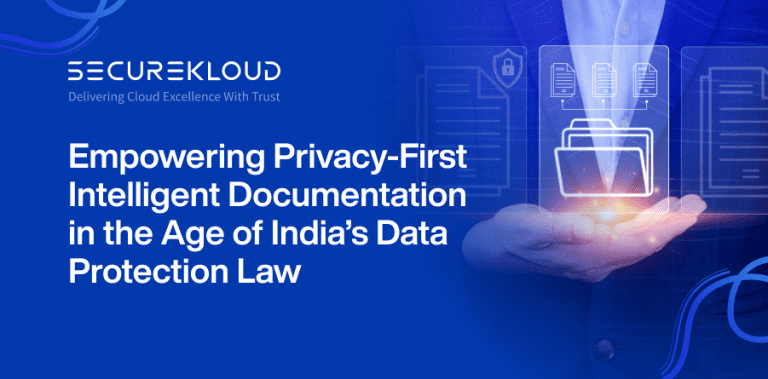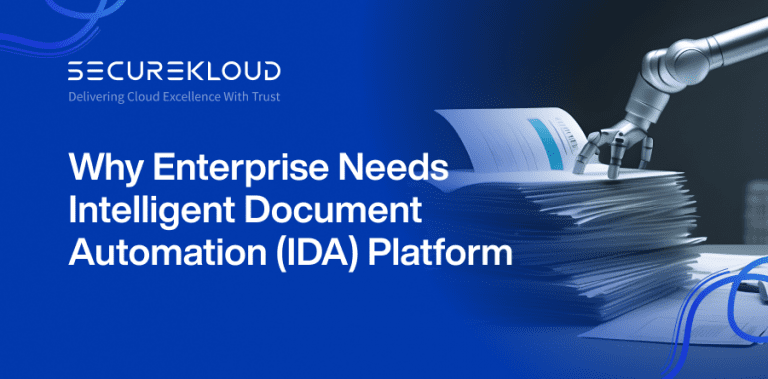- 8Minutes
- 1413Words
- 12Views
As the digital landscape continues to evolve, security threats have become more advanced due to organizations’ overall lack of adept measures to govern data access and movement.
According to a recent survey, 80% of companies have experienced at least one cloud security incident in the last year.
This can result in significant governance and compliance risks when managing client information, regardless of where it is stored, making it imperative for organizations to take active steps to improve cloud security.
Successful cloud operations depend on implementing adequate countermeasures to defend against modern-day cyberattacks. Whether an organization operates in a public, private, or hybrid cloud environment, implementing cloud security solutions and best practices is necessary for ensuring business continuity.
So, here are 6 ways through which you can improve cloud security.
6 Best Practices to Improve Cloud Security
1. Vendor management with security as a key aspect
By managing your vendors with security as a key aspect, you can create a more secure cloud environment. This approach will make sure that your vendors meet your security requirements and that you are aware of any security risks associated with using third-party vendors.
It can also improve cloud security in several ways. Here are a few such benefits:
- Vendor selection: When you prioritize security in your vendor selection process, you are more likely to choose vendors who have a strong security posture. You can evaluate potential vendors by assessing their security certifications, compliance with relevant regulations, and their security track record.
- Contractual agreements: When working with vendors, you should have contracts that clearly outline security expectations and requirements. You can establish security requirements such as data encryption, access control, and breach notification procedures. These contractual agreements can provide a framework for holding vendors accountable for any security incidents.
- Ongoing monitoring: Once you have selected a vendor, ongoing monitoring is crucial to ensure they maintain their security standards. You can monitor vendor security by reviewing their security reports and conducting security audits. You should also have a process for reporting and investigating security incidents to ensure that prompt action is taken.
- Risk management: As part of vendor management, you should assess the potential risk of involving third-party vendors. You can prioritize security risks and establish mitigation strategies. This can help identify and address potential security issues before they become major problems.
Ultimately, a strong vendor management program can help reduce the risk of security incidents and improve the overall security of your cloud environment.
2. Use network security best practices
Adopting network security best practices will ensure that only authorized users and devices can access the cloud environment. For example, implementing multi-factor authentication and strong password policies can help prevent unauthorized access to cloud resources.
You can establish a robust monitoring program that can detect potential threats or suspicious activities in the cloud environment. Monitoring can help identify security incidents and provides an opportunity for you to respond quickly and mitigate any damage.
Through network security best practices, you can establish an effective incident response plan that can guide the response to a security incident. A well-defined incident response plan will minimize the damage caused by an incident and restore the cloud environment to a secure state.
3. Robust data access policies
You can reduce the risk of data breaches through robust data access policies. By implementing strict access controls, you can limit access to sensitive data to only authorized personnel, preventing costly breaches and data loss. You can also be assured that these regulations are met, which can help prevent fines and legal penalties.
By closely monitoring access to cloud resources, you can gain a better understanding of who is accessing what data and when. This can help you detect suspicious behavior, identify security risks, and respond quickly to potential threats.
Robust data access policies help you prevent insider threats. By implementing strict access controls and closely monitoring access to cloud resources, you can limit the likelihood of data leaks and other security incidents caused by employees, contractors, or other insiders. By preventing unauthorized access, you will be in better control that can reduce the impact of insider threats and better protect your sensitive data.


4. Cross-platform protection
Cross-platform protection allows for the application of consistent security controls across multiple platforms and devices. So, the same security measures can be used to protect data and applications, regardless of the platform or device used to access them.
You can manage security controls from a central location. Policies and configurations can be applied consistently across multiple platforms and devices, reducing the risk of misconfiguration or human error.
Improve visibility into security events and threats through cross-platform protection. By monitoring activity across multiple platforms and devices, your security teams can gain a better understanding of the overall security posture of their organization.
You can also reduce the need for multiple security solutions. By using a single cloud-based security solution to protect data and applications across multiple platforms and devices, you can simplify your security infrastructure and reduce costs. Thus, you can manage security incidents and respond to threats, as all security events can be monitored and managed from a central location.
5. Data encryption
Data encryption can improve cloud security by protecting data at rest, securing data in transit, ensuring data confidentiality, and meeting compliance requirements. Improve cloud security through data encryption by providing a way to protect sensitive data from unauthorized access, interception, or theft.
Here are some ways data encryption can improve cloud security:
- Protecting data at rest: Encryption protects data stored in the cloud, including databases, backups, and archives from unauthorized access. Cloud service providers usually offer encryption services that allow customers to encrypt data at rest, which means data is encrypted when it is stored in the cloud and decrypted when accessed.
- Securing data in transit: Data will be secured as it is transmitted between the user and the cloud service provider. Cloud providers typically use SSL/TLS protocols to secure data in transit, which uses encryption to protect data during transmission.
- Ensuring data confidentiality: Encryption can protect data confidentiality, meaning only authorized users can access sensitive data. This ensures that even if an attacker gains access to the cloud, they won’t be able to read the data, as it is encrypted and requires a key to decrypt.
- Meeting compliance requirements: It will help you comply with regulatory requirements, such as HIPAA, PCI, and GDPR, which mandate data protection and confidentiality. By encrypting data, you can ensure that sensitive data is stored according to these regulations.
6. Regularly update and patch software
Security features and techniques are constantly evolving to keep up with the changing threat landscape. Regularly updating and patching software ensures that the cloud provider has access to the latest security features, providing better protection against new and emerging threats.
Software updates and patches often include bug fixes and security patches that address known vulnerabilities. By applying these updates, the cloud provider can prevent attackers from exploiting these vulnerabilities to gain unauthorized access to data and systems.
This process also prevents the installation of malware by addressing the vulnerabilities that the malware exploits. Improve the stability and performance of the system that will reduce the likelihood of system crashes, which can be exploited by attackers.
Many industries have regulations and compliance requirements that mandate regular software updates and patches. Compliance with these regulations can help prevent fines and legal actions, ensuring that the legal requirements are met.
By following these steps, you can significantly improve your cloud security posture and minimize the risk of data breaches and cyber-attacks. Also, it is important to note that cloud security is an ongoing process, and you should continuously evaluate and update your security measures to stay ahead of evolving threats.


SecureKloud – Your Aide in Strengthening Your Cloud Security
Security and compliance are interdependent, as one validates the other. At SecureKloud, our enterprise-level cloud security services provide comprehensive governance and risk management to enhance the security of your cloud assets. We integrate security at every layer of your cloud infrastructure using a multi-layered approach.
Ensure industry-specific cloud compliance across complex hybrid and multi-cloud environments through our comprehensive cloud security services. We monitor and safeguard your workloads on AWS and Google Cloud through the expertise of our 150+ certified cybersecurity professionals.
If you’re looking to improve cloud security, our experts here are all ears.
You may also read:





